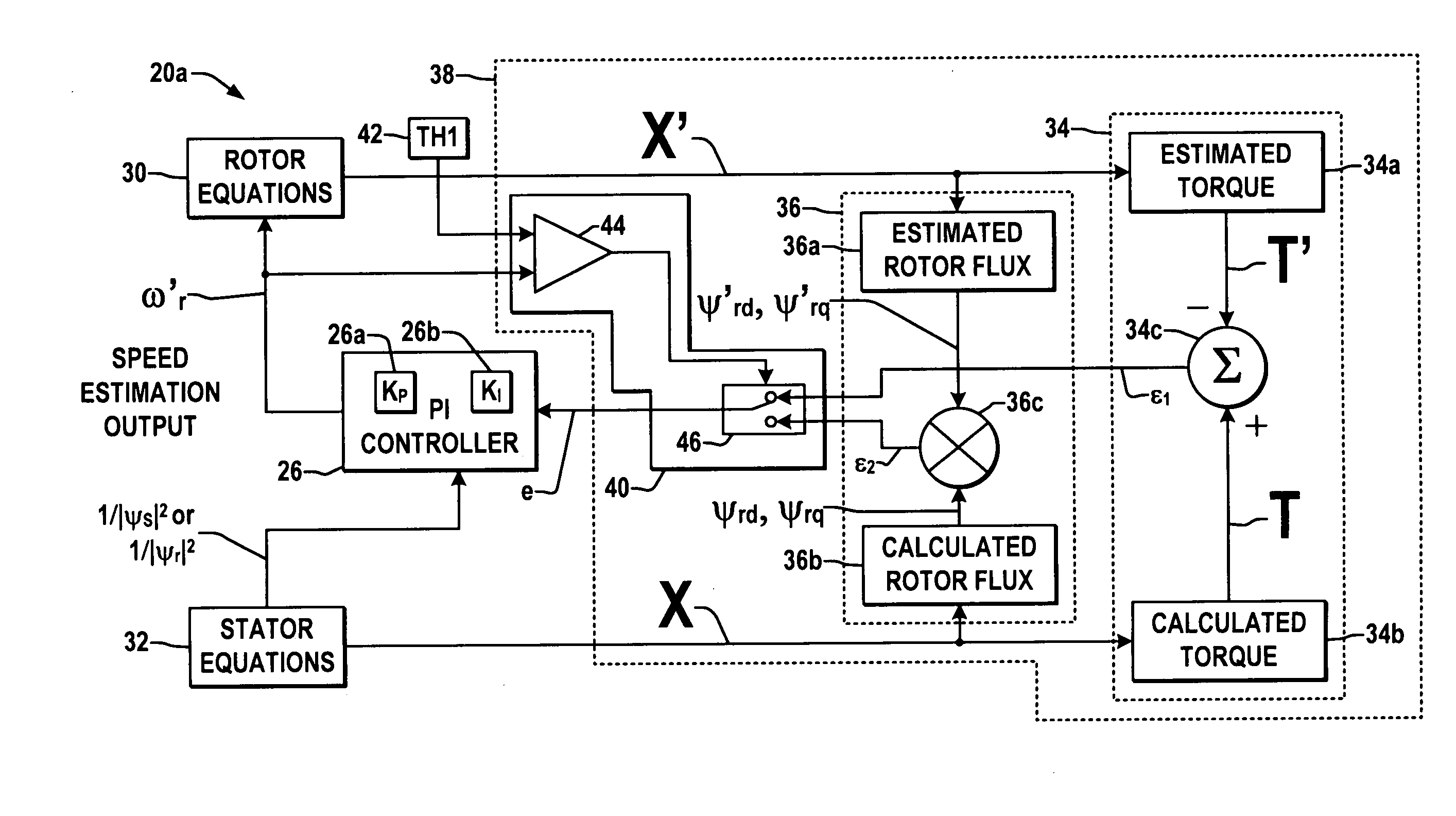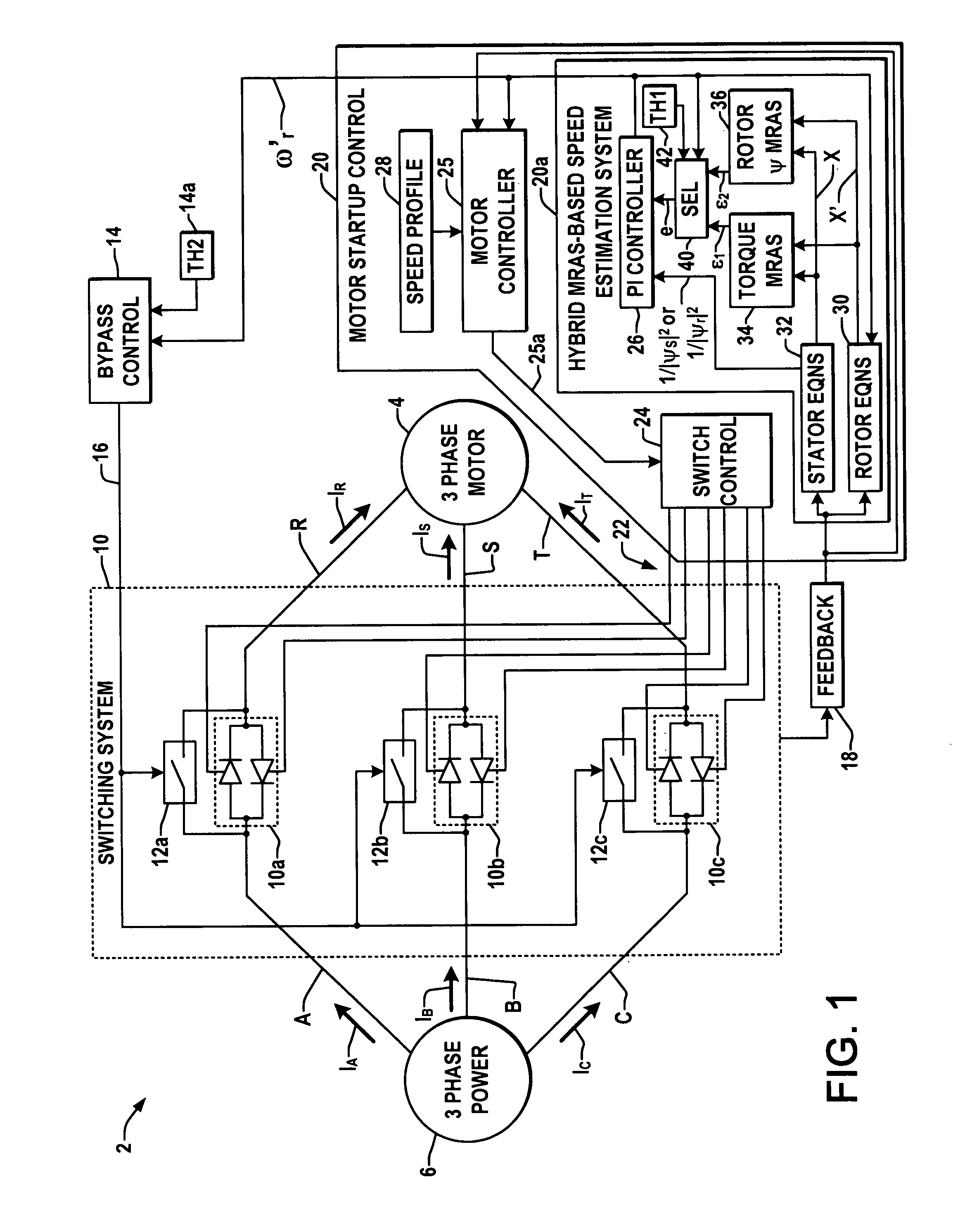System and method for motor speed estimation using hybrid model reference adaptive system
a technology of adaptive system and motor speed, applied in the direction of polyphase induction motor starter, dynamo-electric converter control, starter details, etc., can solve the problems of increasing the cost of the motor drive system, requiring maintenance, and difficult to coordinate the motor startup with other equipment in various automated systems, so as to achieve less sensitive effects
- Summary
- Abstract
- Description
- Claims
- Application Information
AI Technical Summary
Benefits of technology
Problems solved by technology
Method used
Image
Examples
Embodiment Construction
[0017]Referring now to the figures, several embodiments or implementations of the present invention are hereinafter described in conjunction with the drawings, wherein like reference numerals are used to refer to like elements throughout, the invention is hereinafter illustrated and described in the context of startup control for a three-phase induction motor, although the invention is not limited to the illustrated examples and can be employed in controlling AC motors of any number of phases. The embodiments illustrated below employ closed-loop control of motor speed during startup, in which an error value used by a regulating controller is obtained using a torque-based MRAS component for a first range of speeds, and then the error is obtained for a second speed rage using a rotor flux-based MRAS component, thereby providing hybrid MRAS speed estimation and control. The inventors have found that the hybrid MRAS approach can be easily implemented in existing motor control apparatus,...
PUM
 Login to View More
Login to View More Abstract
Description
Claims
Application Information
 Login to View More
Login to View More - R&D
- Intellectual Property
- Life Sciences
- Materials
- Tech Scout
- Unparalleled Data Quality
- Higher Quality Content
- 60% Fewer Hallucinations
Browse by: Latest US Patents, China's latest patents, Technical Efficacy Thesaurus, Application Domain, Technology Topic, Popular Technical Reports.
© 2025 PatSnap. All rights reserved.Legal|Privacy policy|Modern Slavery Act Transparency Statement|Sitemap|About US| Contact US: help@patsnap.com



